
Everest Base Camp Trek falls in the moderately difficult trek, your prior experience becomes helpful but not mandatory. It means people of different ages, sizes, and shapes can complete this journey without much difficulty if they have a perfect level of fitness.
Trekking the foothill of Everest is one of the dream destinations worldwide. Every year thousands of trekkers and adventure seekers reach the Khumbu region.
Spending around two weeks surrounding the mighty peaks and exploring the lifestyle of the Sherpas becomes a lifetime memory. However, trekking may depend upon a variety of things as geography, time, energy, fitness, and more.
The journey to the base of Everest is certainly glorious and memorable that offers a lifetime experience but you may face some inconvenience, hurdles, and difficulties due to various reasons.
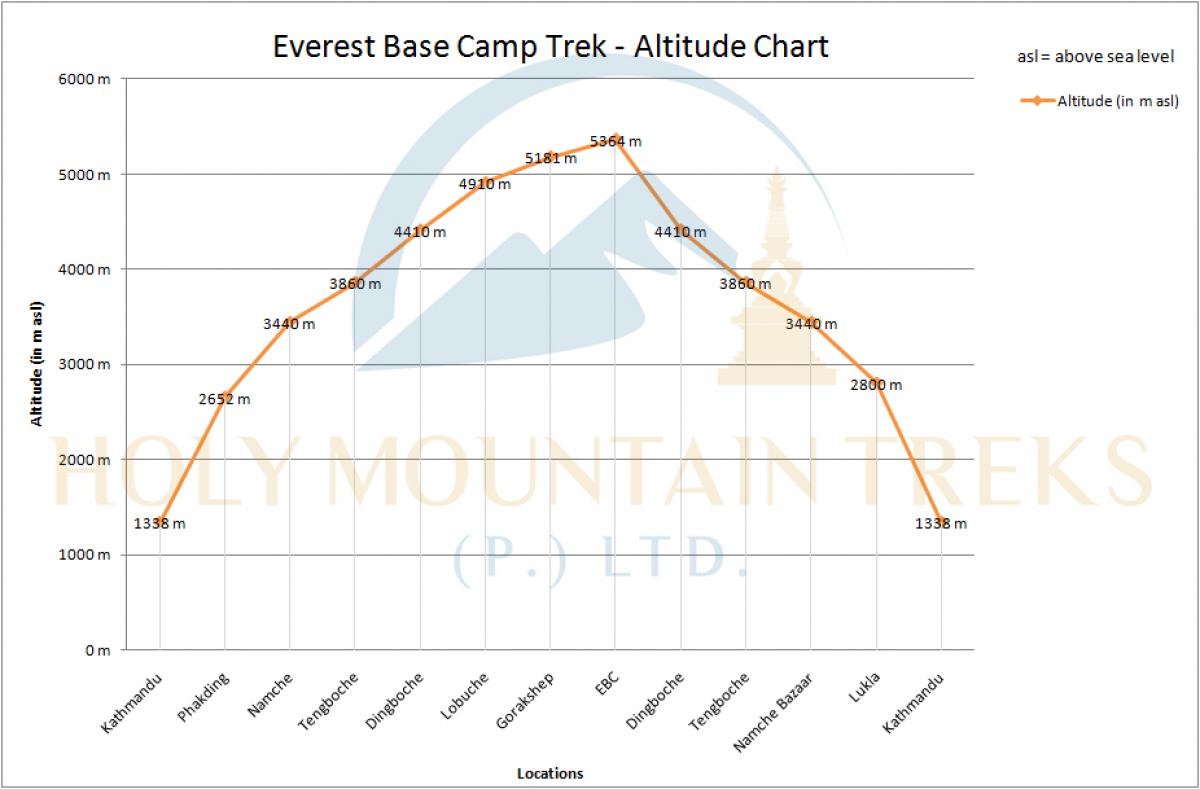
Kathmandu is situated at 1,350m (4,429 ft) from sea level. The trekkers from the sea level find great change as they land in Kathmandu. Landing Lukla 2,850m (9,350ft) changes the altitude in the doubled way.
The highest point of the journey is Kala Patthar elevating 5,550m (18,208ft).
Throughout the trek, your altitude changes 500m to 700m each day. So, this may make your journey difficult.
Next, as we hike upwards, the layer or density of oxygen in the air decreases. This may lead to Acute Mountain Sickness to anyone regardless of age gender or fitness level.
You can avoid such symptoms ascending gradually acclimatizing to the changing climate. So, we organize the Everest Base Camp Trek keeping two extra days in Namche Bazaar and Dingboche that help you to be adjusted to the alpine and arctic atmosphere.
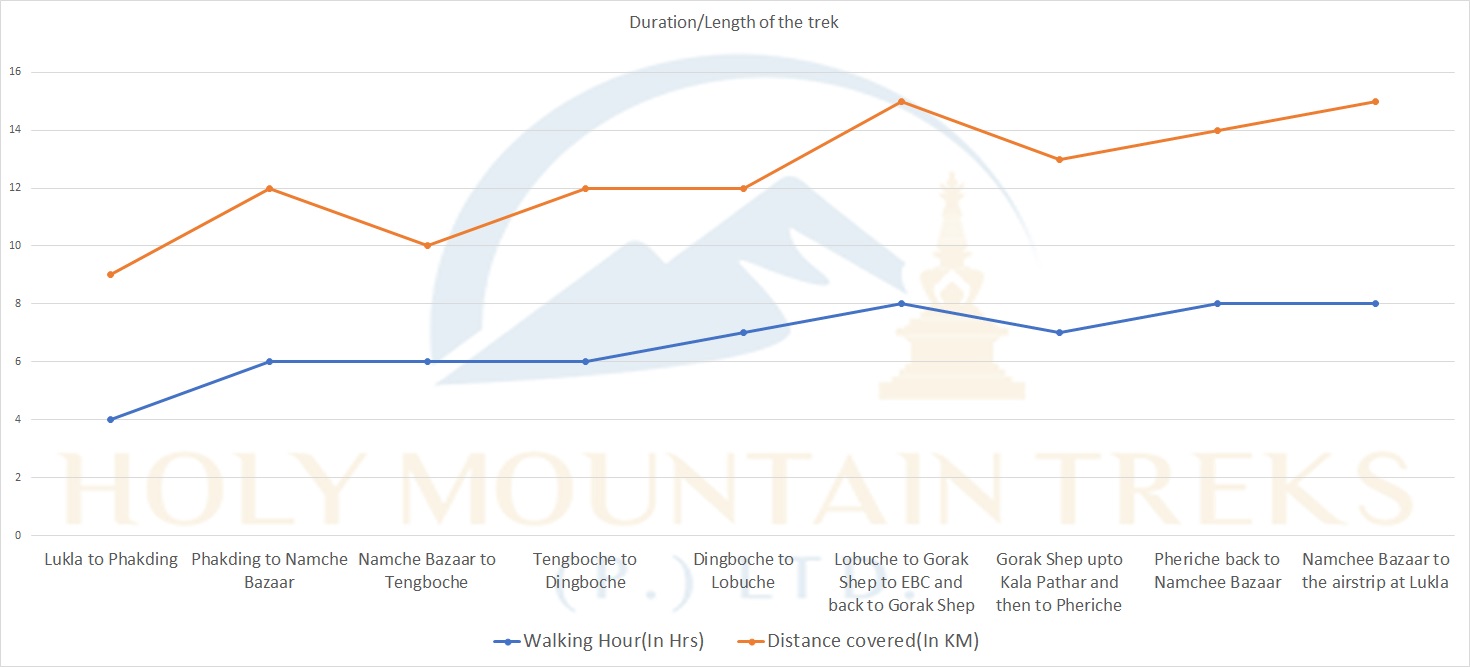
Everest Base Camp Trek depends upon the trekking routes and the number of acclimatization days.
The total distance of the trek is 130 kilometers. The total round journey from and to Lukla takes 14-16 days.
Trekkers should march12-15 km each day walking 6-7 hours a day.
Walking 4-5 kilometers an hour in the Himalayas following rocky and snowy terrain may be challenging. But walking gradually, marching at your own pace, letting your backpacks to your porters can avoid such hazards.
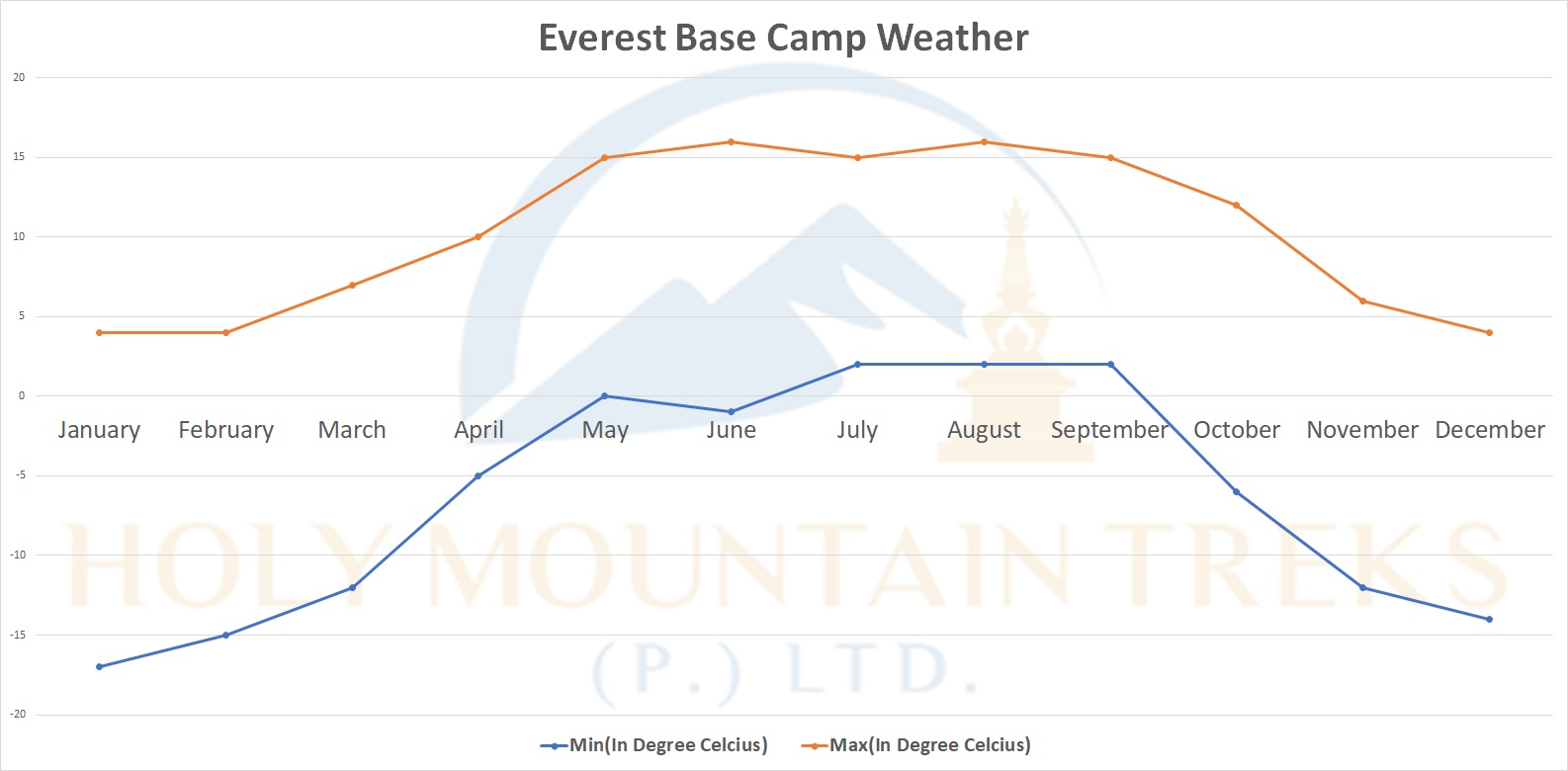
It is not possible to trek Everest Base Camp throughout the year because of the climate and weather conditions. In the winter, you will be affected by the heaps of snow and cool temperature. Next in the monsoon season, you may be disturbed by rain, landslide, or floods.
In these seasons, the chances of the cancellation of the flight from and to Lukla are higher.
The nights are cooler than that the daytime in the Everest region. The trekkers may surprise to see the ranges of temperature changes on the same day.
During midday, the temperature reaches 20-25 °C whereas, in the nighttime, it may dip down up to -20 °C within 24 hr.
As it is almost impossible to predict the exact weather condition in the Himalayas, it is better to follow your guide’s instructions.
Although this trek is a moderately difficult journey, you should pass several vistas, rough terrains, uphill and downhill, river gorges, rocky boulders, and some steeps as well. If you are not physically fit and do not have some pre-exercises, you may encounter some hazards.
Next, you should trek approximately 12 kilometers each day for 14 days. Completing this you may find inconvenience if your body is not trained properly beforehand.
The starting point of Everest Base Camp Trek is either Jiri or Lukla. Flying Lukla and starting the journey is adventurous in itself because it elevates 2860m from sea level. Above 3,000m it is highly possible to be caught by Altitude Sickness. If ignored this, may become fatal.
Ascending gradually, you summit Base Camp 5,364m and further to Kala Patthar 5,550m above sea level. So, you need to walk slowly maintaining your own pace and acclimatizing yourself properly to the altitudes there around.
‘Prevention is Better than Cure’
As already mentioned, Everest Base Camp Trek is a moderate trek that does not require extra energy and effort successfully. In the case of Acute mountain sickness and other serious hazards, their proper facility of Helicopter rescue saves the life of the trekkers. But you are suggested to be well prepared following the tips given.
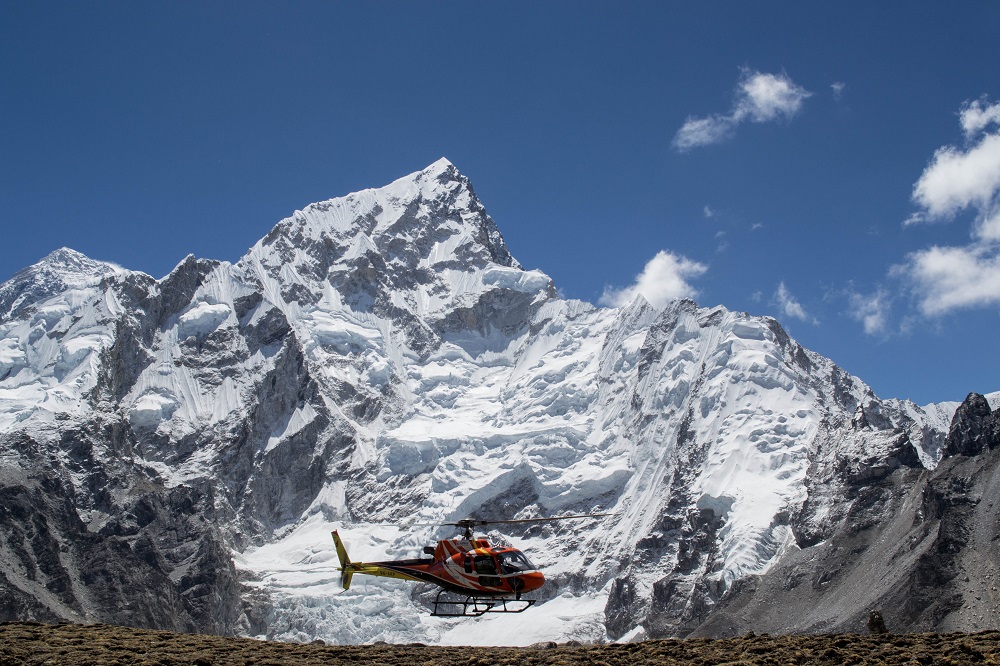
Those trekkers who find Everest Base Camp Trek difficult can afford Everest View Trek, Everest Heli tour, and Everest Short Trek in the Everest region. These treks and tours are more comfortable and easier than Everest Base Camp Trek.
If you want more alternatives; Annapurna Base Camp Trek, Ghorepani-Poon Hill Trek, Gokyo lake Treks, Manaslu Circuit Trek, Annapurna Circuit Trek, Mardi Himal Trek, Upper Mustang Trek, Machhapuchhare Base Camp Trek, and Jomsom Muktinath Trek can be the best options.
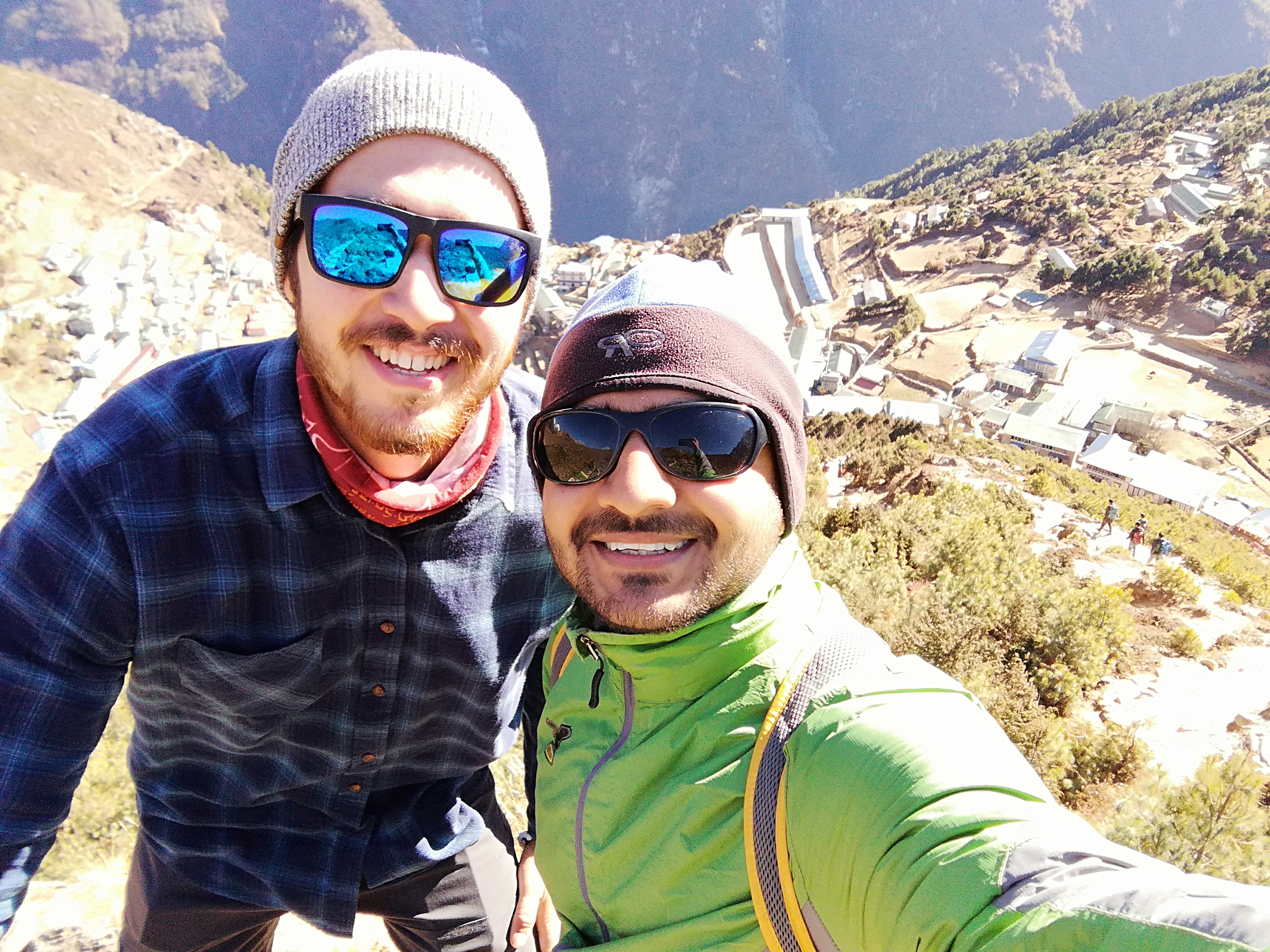
Trekking in Nepal offers you a lifetime, memorable and breathtaking experience. You will get the cultural uniqueness and natural beauty while trekking. For this, it is better to have guides and porter which makes your journey more comfortable and easier. These are the benefits of taking the guides and porters on the trek.
One of the most demanded treks, Everest Base Camp offers you panoramic views of the Himalayas, mesmerizing landscapes, terrains, river gorges, a thrilling flight over snowy heaps, and diverse flora and fauna.
Having some preparations before the trek makes your journey more comfortable and easier. The checkpoints and maps on the ways make your journey safe. Using the internet in the teahouses on the way, you can communicate with your beloved ones.
Along with physical preparation, mental preparation is another factor to success in your journey. Be confident and start your journey, you definitely will complete it.
Comment Reply
Hello Debasish Greetings
Thank you for your affairmative response to our article. If you are eager to know more about the trek, Himalayas and more, please feel free to write. Thanks!!
ReplyComment Reply
Leave Your Comment